255 vs 275 Tires
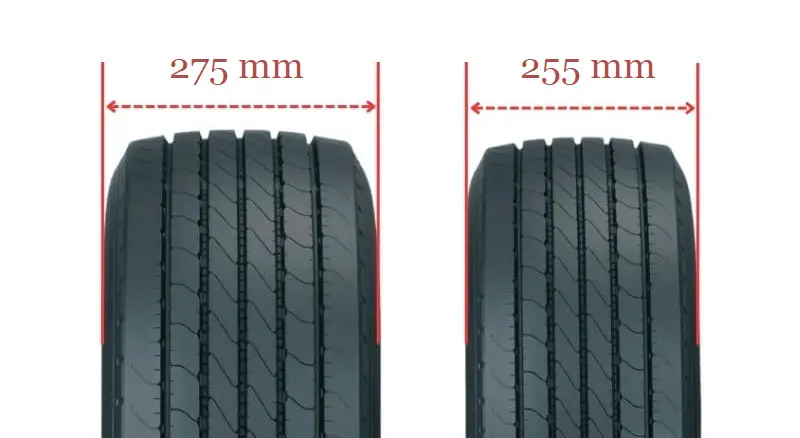
The main difference between 255 and 275 tires lies in their tread width, where a 275 tire is 20 millimeters wider than its 255 counterpart, translating to roughly 0.79 inches. This subtle yet significant distinction influences several aspects of a vehicle’s performance and appearance.
275 vs 255 Table
Get a quick overview of the differences between 255 and 275 tire sizes with our handy comparison table.
| Tire Size 255 | Tire Size 275 |
|---|---|
| Enjoy a smoother ride with 255 tires over 275 tires. | Opt. for 275 tires for maximum dry road traction. |
| Save money with generally lower-priced 255 tires. | The 275 tires offer superior handling compared to 255 tires. |
| Tackle snow, rain, and slush confidently with superior traction from 255 tires. | Choose 275 tires for carrying heavier loads. |
| Boost fuel economy by opting for 255 tires. | Aesthetically, 275 tires are generally more appealing than 255 tires. |
| The recommended rim width range is between 7 to 9 inches. | The recommended Rim width range for 275 tire size: 8.0-10 inches. |
| The 255 tire size is 20mm smaller than 275 tire size. | The 275 tire size is 20mm larger than 255 tire size. |
| Swap out 275 tires with 255 tires, thanks to their overlap in rim width ranges. | Th 255 tire size can be replaced by 275 tire size due to overlap in rim width ranges. |
Ride Comfort
Larger tires, like the 275s, offer superior comfort on rough terrains due to their increased sidewall height, which absorbs impacts better.
In contrast, 255 tires may provide a smoother experience on highways and urban roads, emphasizing their suitability for different driving environments.
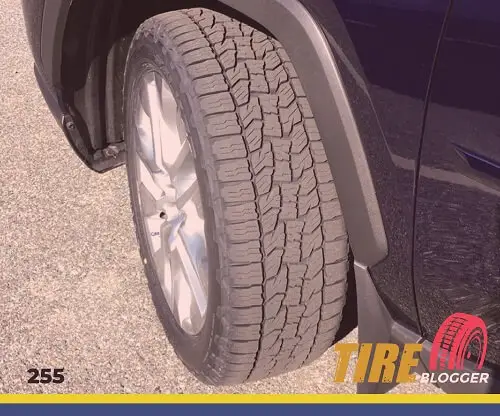
Ground Clearance
The increased size of 275 tires provides enhanced ground clearance, making them ideal for off-road adventures. However, this can slightly lower the speedometer reading.
The 255 tires, being smaller, lower the vehicle’s ground clearance, potentially raising the speedometer reading while making it easier for the undercarriage to contact obstacles.
Gas Mileage
255 tires, with their smaller contact patch and less rotational mass, contribute to better fuel efficiency, which is crucial for daily commuting and long-distance travel.
Conversely, 275 tires, due to their larger diameter and width, may reduce fuel efficiency by increasing rolling resistance and rotational mass.
Aesthetics Look
Smaller tires like the 255s enhance a vehicle’s aerodynamics, while 275 tires offer a more aggressive look but might detract from aerodynamic efficiency, showing how aesthetics play a role in tire selection.
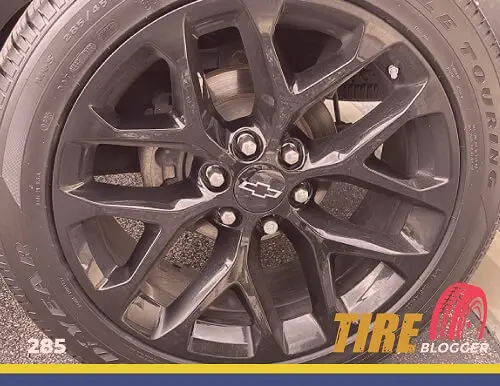
Handling & Stability
The 255 tires excel in handling and responsiveness on paved surfaces. Meanwhile, 275 tires improve stability and traction, especially off-road or on uneven paths, demonstrating a trade-off between agility and steadiness.
Noise & Vibration
The 255 tires generally lead to a quieter ride on smooth roads but might transmit more vibrations from irregularities.
The larger 275 tires can increase road noise, particularly with aggressive tread patterns, yet they often reduce vibration due to their higher air volume and sidewall height.
Durability & Wear
The smaller 255 tires can show even wear and a potentially longer tread life, while 275 tires, although capable of enduring more impacts, might cause more wear to vehicle components because of their extra weight.
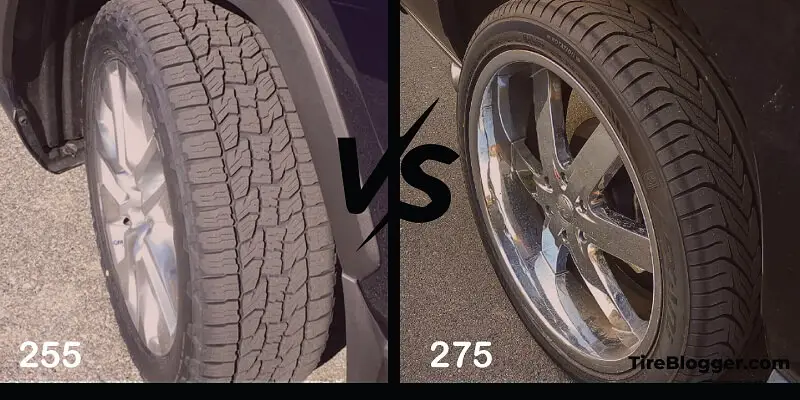
Performance
Narrower 255 tires are sometimes more effective in snow and ice by cutting through to the road surface. In contrast, 275 tires might offer better traction in specific off-road or muddy conditions due to their size.
Difference Between 255 and 275 Tires
The primary difference between 255 and 275 tires is the section width, with 275 tires being 20mm wider than 255 tires. This difference in width can impact various aspects of tire performance and handling characteristics.
Can I Use 255 Tires Instead of 275?
Yes, you can use 255 tires instead of 275 tires. The ideal rim width range for 255 tires overlaps with the range for 275 tires, making the switch possible. However, consider other factors before making the change.
For optimal performance, new tires should match current aspect ratio and rim diameter. If mismatched, keep overall diameter difference below 3% to maintain speedometer accuracy.
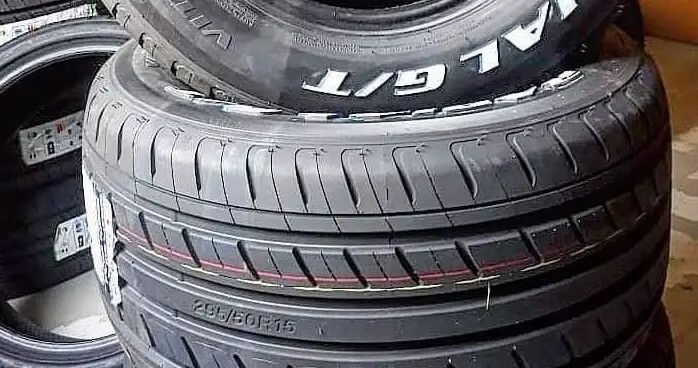
Can I Use 275 Tires Instead of 255?
Yes, it is possible to use 275 tires instead of 255 tires. The ideal rim width range for 275 tires overlaps with the range for 255 tires, allowing for a compatible switch.
To avoid affecting speedometer and vehicle performance, ensure new tires’ aspect ratio and rim diameter match current setup or keep overall diameter difference within 3%.
Can I Put 255 Tires on 275 Rims?
Yes, you can put 255 tires on rims designed for 275 tires. The ideal rim width range for 275 tires (8.5-10.0 inches) overlaps with the range for 255 tires (8.0-9.5 inches), ensuring proper fitment and performance.
Can I Put 275 Tires on 255 Rims?
Yes, you can put 275 tires on rims designed for 255 tires. The ideal rim width range for 255 tires (8.0-9.5 inches) overlaps with the range for 275 tires (8.5-10.0 inches), allowing for a compatible fitment.
Our Observation
Choosing between 255 and 275 tires depends on your driving preferences and requirements. For those prioritizing fuel efficiency, handling, and a quieter ride, especially in urban settings, 255 tires are the preferred choice.
Conversely, if you seek enhanced ground clearance, comfort in rough terrains, and a bold aesthetic, 275 tires are more suitable. Ultimately, the decision should align with your vehicle’s performance needs and personal style.

Meet Caitlin McCormack, a Tire Size Expert and Blogger Passionate About Everything Related to Tires. With Years of Experience in the Tire Industry, Caitlin Has Become an Expert in Tire Sizes and Their Impact on Vehicle Performance.
